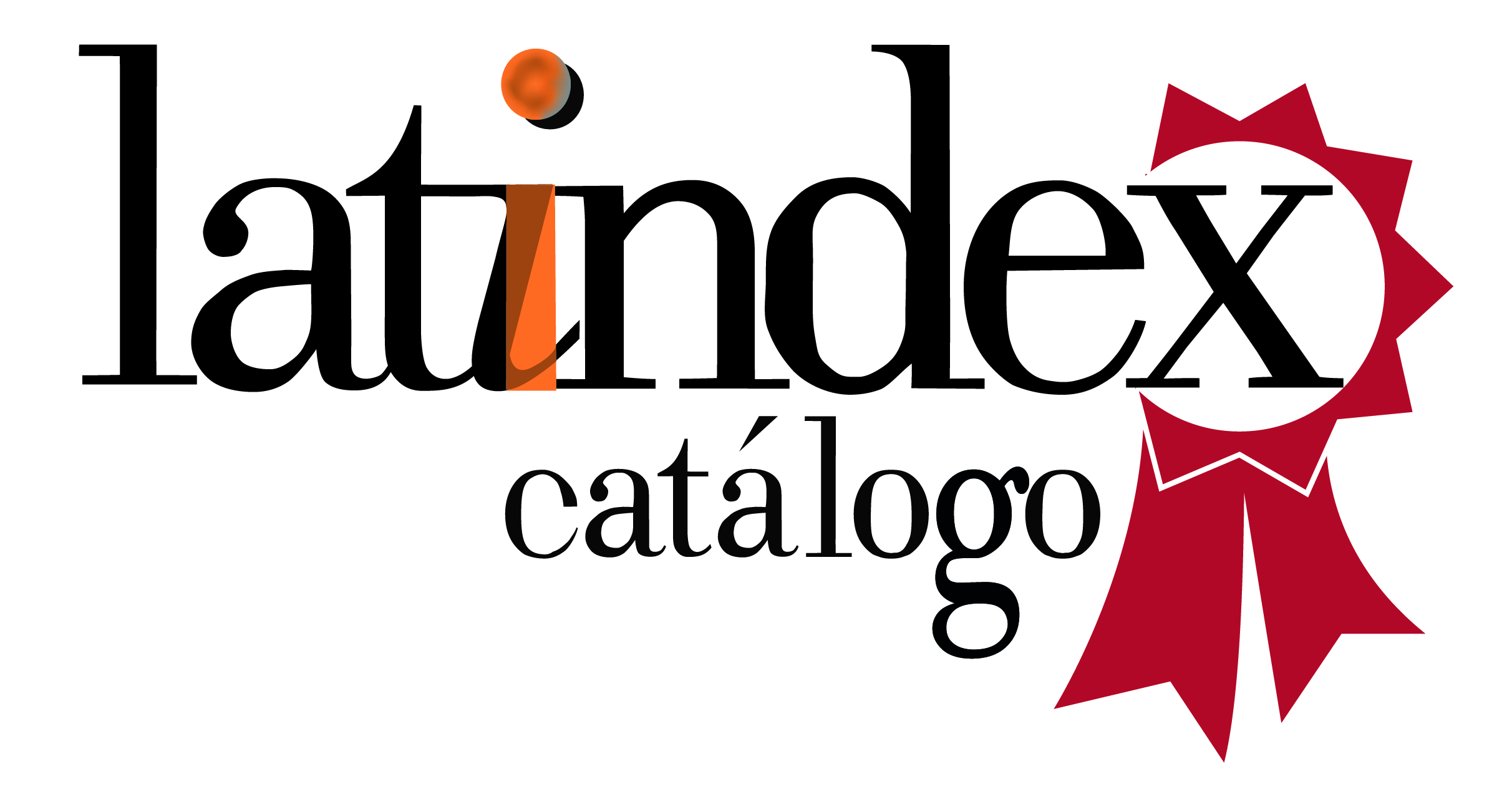Internal consistency and dimensionality assessment of the Cognitive Social Capital Scale among Colombian adults
DOI:
https://doi.org/10.52379/mcs.v8i1.363Keywords:
Social capital, Factor analysis, Reliability, Validity, Validation studiesAbstract
Introduction: During the last two decades, the concept of social capital has been used increasingly frequently in health sciences due to the direct and indirect relationships between social capital and populations' physical and mental health. Therefore, it is necessary to build an instrument to quantify this concept confidently and reliably. Objective: The study aimed to internal consistency and dimensionality of a seven-item scale to measure social capital in Colombia's general population of adults. Methods: An online validation study included a sample of 700 adults aged between 18 and 76 years; 68% were females. Participants completed a seven-item scale called the Cognitive Social Capital Scale (CSCS). Cronbach's alpha and McDonald's omega were computed to test internal consistency. The authors explore the internal consistency and dimensionality of the CSCS. Results: The CSCS presented a low internal consistency (Cronbach's alpha of 0.56 and McDonald's omega of 0.59) and poor dimensionality. Then, the researchers tested a five-item version (CSCS-5). The CSCS-5 showed high internal consistency (Cronbach's alpha of 0.79 and McDonald's omega of 0.80) and a one-dimension structure with acceptable goodness-of-fit indicators. Discussion: The CSCS-5 presents high internal consistency and a one-dimensional structure to measure cognitive capital social in the Colombian sample. Authors can recommend measuring social capital in the general Colombian population. Further research should corroborate this pencil and paper application findings and explore other reliability and validity indicators.
Downloads
References
Moore S, Kawachi I. Twenty years of social capital and health research: A glossary. J Epidemiol Community Health.2017;71(5):513-7. https://doi.org/10.1136/jech-2016-208313
Häuberer J. Social capital theory. Toward a methodological foundation. Wiesbaden: VS Research; 2011.
Rouxel PL, Heilmann A, Aida J, Tsakos G, Watt RG. Social capital: theory, evidence, and implications for oral health. Community Dentist Oral Epidemiol.2015;43(2):97-105. https://doi.org/10.1111/cdoe.12141
Portes A. Social capital: Its origins and applications in modern sociology. Ann Rev Sociol.1998;24(1):1-24. URL.
Keszei AP, Novak M, Streiner DL. Introduction to health measurement scales. J Psychosom Res.2010;68(4):319-23. https://doi.org/10.1016/j.jpsychores.2010.01.006
Iyer S, Kitson M, Toh B. Social capital, economic growth and regional development. Region Stud.2005; 39(8):1015-40. https://doi.org/10.1080/00343400500327943
Reyes S, Giovannoni G, Thomson A. Social capital: Implications for neurology. Brain Behav.2019;9(1):e01169. https://doi.org/10.1002/brb3.1169
Claridge T. Dimensions of social capital-structural, cognitive, and relational. Soc Capital Res.2018;1:1-4. URL.
Poortinga W. Community resilience and health: The role of bonding, bridging, and linking aspects of social capital. Health Place.2012;18(2):286-95. https://doi.org/10.1016/j.healthplace.2011.09.017
Szreter S Woolcock, M. Health by association? Social capital, social theory, and the political economy of public health. Int J Epidemiol.2004;33(4):650-67. https://doi.org/10.1093/ije/dyh013
Abbott S, Freeth D. Social capital and health: starting to make sense of the role of generalized trust and reciprocity. J Health Psychol.2008;13(7):874-83. https://doi.org/10.1177/1359105308095060
Harpham T, Grant E, Thomas E. Measuring social capital within health surveys: Key issues. Health Policy Plan.2002;17(1):106-11. https://doi.org/10.1093/heapol/17.1.106
De Silva MJ, McKenzie K, Harpham T, Huttly SR. Social capital and mental illness: A systematic review. J Epidemiol Community Health. 2005;59(8):619-27. https://doi.org/10.1136/jech.2004.029678
Ferlander S. The importance of different forms of social capital for health. Acta Sociol.2007;50(2):115-28. https://doi.org/10.1177/0001699307077654
Riumallo-Herl CJ, Kawachi I, Avendano M. Social capital, mental health and biomarkers in Chile: Assessing the effects of social capital in a middle-income country. Soc Sci Med.2014;105:47-58. https://doi.org/10.1016/j.socscimed.2013.12.018
Van Der Gaag M, Snijders TA. The Resource Generator: social capital quantification with concrete items. Soc Network.2005;27(1):1-29. https://doi.org/10.1016/j.socnet.2004.10.001
Mignone J, Elias B, Hall M. Validation of a culturally appropriate social capital framework to explore health conditions in Canadian First Nations Communities. Int Indigen Policy J.2011;2(1):3. https://doi.org/10.18584/iipj.2011.2.1.3
Wang P, Chen X, Gong J, Jacques-Tiura AJ. Reliability and validity of the Personal Social Capital Scale 16 and Personal Social Capital Scale 8: Two short instruments for survey studies. Soc Indic Res.2014;119(2):1133-48. https://doi.org/10.101607/s112205-013-0540-3
Chen X, Wang P, Wegner R, Gong J, Fang X, Kaljee L. Measuring social capital investment: Scale development and examination of links to social capital and perceived stress. Soc Indic Res.2015;120(3):669-87. https://doi.org/10.101607/s11205-014-0611-0
Pérez J, Bustos JM, Reiko ME. Confianza: Un estudio psicométrico desde la perspectiva del capital social. Rev Electron Psicol.2017;7(14):5-13. URL.
Fernández JA, Pinzón CE, Moreno J, Cepeda MC, Idrovo AJ. Capital social en áreas rurales: Adaptación al español y validación factorial de una escala. Cienc Saude Colet.2014;19(7): 2207-14. https://doi.org/10.1590/1413-81232014197.09442013
Martin KS, Rogers BL, Cook JT, Joseph HM. Social capital is associated with decreased risk of hunger. Soc Sci Med.2004;58(12):2645-54. https://doi.org/10.1016/j.socscimed.2003.09.026
Sapag, JC, Aracena M, Villarroel L, Poblete F, Berrocal C, Hoyos R, et al. Social capital and self-rated health in urban low-income neighbourhoods in Chile. J Epidemiol Community Health.2008;62(9):790-2. https://doi.org/10.1136/jech.2006.052993
Alvarado R, Sapag JC, Arellano J, Alarcon A, Tapia E. Capital social y salud mental en una muestra representativa de trabajadores chilenos. Rev Fac Cienc Med Cord.2015;72(4):227-35. https://doi.org/10.31053/1853.0605.v72.n4.13798
Holt-Lunstad J, Smith TB, Layton JB. Social relationships and mortality risk: a meta-analytic review. PLoS Med. 2010;7(7):e1000316. https://doi.org/10.1371/journal.pmed.1000316
Sampson R, Raudenbush S, Earls F. Neighborhoods and violent crime: A multilevel study of collective efficacy. Science. 1997;277(5328):918-24. https://doi.org/10.1126/science.277.5328.918
Cronbach J. Coefficient alpha and the internal structure of the test. Psychometrika.1951;16(3):297-334. https://doi.org/10.1007/BF02310555
McDonald RP. The theoretical foundations of principal factor analysis, canonical factor analysis, and alpha factor analysis. Br J Math Stat Psychol.1970;23(1):1-21. https://doi.org/10.1111/j.2044-8317.1970.tb00432.x
Gorsuch RL. Exploratory factor analysis: Its role in item analysis. J Person Assess.1997;68(3):532-60. https://doi.org/10.1207/s15327752jpa6803_5
Streiner DL. Figuring out factors: The use and misuse of factor analysis. Can J Psychiatry.1994;39(3):135-40. https://doi.org/10.1177/070674379403900303
Drost EA. Validity and reliability in social science research. Educ Res Perspect.2011;38(1):105-23. URL.
MacCallum RC, Widaman KF, Zhang S, Hong Z. Sample size in factor analysis. Psychol Method.1999;4(1):84-99. https://doi.org/10.1037/1082-989X.4.1.84
Borsa JC, Damasio BF, Bandeira DR. Cross-cultural adaptation and validation of psychological instruments: Some considerations. Paidéia.2012;22(53):423-32. https://doi.org/10.1590/S0103-863X2012000300014
Guimaraes MB, Haas VJ, Spadoti RA, Marques dos Santos M, Galvão CM. Cultural adaptation and validation of an instrument on barriers for the use of research results. Rev Latino-Am Enferm.2017;25:e.2852. https://doi.org/10.1590/15q8-8345.1652.2852
Weems GH, Onwuegbuzie AJ, Lustig D. Profiles of respondents who respond inconsistently to positively- and negatively-worded items on rating scales. Eval Res Educ.2003;17(1):45-60. https://doi.org/10.1080/14664200308668290
Sánchez J, Muñoz F, Montoro FJ. ¿Cómo mejorar la tasa de respuesta en encuestas on line? Rev Estud Empres.2009;1(1):45-62. URL.
Campo-Arias A, Oviedo HC. Propiedades psicométricas de una escala: la consistencia interna. Rev Salud Publica.2008;10(5):831-9. URL.
Tavakol M, Dennick R. Making sense of Cronbach?s alpha. Int J Med Educ.2011;2(1):53-5. https://doi.org/10.5116/ijme.4dfb.8dfd
Campo-Arias A, Herazo E, Oviedo HC. Análisis de factores: fundamentos para la evaluación de instrumentos de medición en salud mental. Rev Colomb Psiquiatr.2012;41(4):659-71. URL.
Harrington D. Confirmatory factor analysis. Oxford: Oxford University Press; 2009.
Jackson DL, Gillaspy Jr JA, Purc-Stephenson R. Reporting practices in confirmatory factor analysis: an overview and some recommendations. Psychol Method. 2009;14(1):6-23. https://doi.org/10.1037/a0014694
Watkins MW. Exploratory factor analysis: A guide to best practice. J Black Psychol.2018;44(3):219-46. https://doi.org/10.1177/0095798418771807
Kaiser HF. An index of factorial simplicity. Psychometrika.1974;39(1):31-6. https://doi.org/10.1007/BF02291575
Bartlett MS. Test of significance in factor analysis. Br J Psychol.1950;3(1):77-85. https://doi.org/10.1111/j.2044-8317.1950.tb00285.x
Hefetz A, Liberman G. The factor analysis procedure for exploration: a short guide with examples. Cult Educ.2017;29(3):526-62. https://doi.org/10.1080/11356405.2017.1365425
Hu L, Bentler P. Cutoff criteria for fit indexes in covariance structure analysis: Conventional criteria versus new alternatives. Struct Equat Model.1999;6(1):1-55. https://doi.org/10.1080/10705519909540118
STATA 13.0. College Station: STATA; 2013.
World Medical Association. Declaration of Helsinki. Seoul, Korea: WMA; 2018. URL.
Ministerio de Salud de Colombia. Resolución 008430 por la cual se establecen las normas científicas, técnicas y administrativas para la investigación en salud. Bogotá: Ministerio de Salud; 1993.
Reise SP, Waller NG, Comrey AL. Factor analysis and scale revision. Psychol Assess.2000;12(3):287-97. https://doi.org/10.1037/1040-3590.12.3.287
Terwee CB, Bot SD, de Boer MR, van der Windt DAWM, Knol DL, et al. Quality criteria were proposed for measurement properties of health status questionnaires. J Clin Epidemiol.2007;60(1):34-42. https://doi.org/10.1016/j.jclinepi.2006.03.012
Ackerman TA. A didactic explanation of item bias, item impact, and item validity from a multidimensional perspective. J Educ Measur.1992;29(1):67-91. https://doi.org/10.1111/j.1745-3984.1992.tb00368.x
Cook DA, Beckman TJ. Current concepts in validity and reliability for psychometric instruments: theory and application. Am J Med.2006;119(2):166.e7-166.e16. https://doi.org/10.1016/j.amjmed.2005.10.036
Hambleton RK. Good practices for identifying differential item functioning. Med Care.2006;44(11):S182-8. https://doi.org/10.1097/01.mlr.0000245443.86671.c4
Hays RD, Morales LS, Reise SP. Item response theory and health outcomes measurement in the 21st Century. Med Care.2000;38(9 Suppl. 2):28-42. https://doi.org/10.1097/00005650-200009002-00007
Guyatt G, Walter S, Norman G. Measuring change over time: Assessing the usefulness of evaluative instruments. J Chron Dis.1987;40(2):171-8. https://doi.org/10.1016/0021-9681(87)90069-5
Corman SR. Computerized vs. pencil and paper collection of network data. Soc Network.1990;12(4):375-84. https://doi.org/10.1016/0378-8733(90)90016-3
Downloads
Published
Issue
Section
License
Copyright (c) 2024 Adalberto Campo-Arias, Carmen Cecilia Caballero-Domínguez, John Carlos Pedrozo-Pupo

This work is licensed under a Creative Commons Attribution 4.0 International License.











